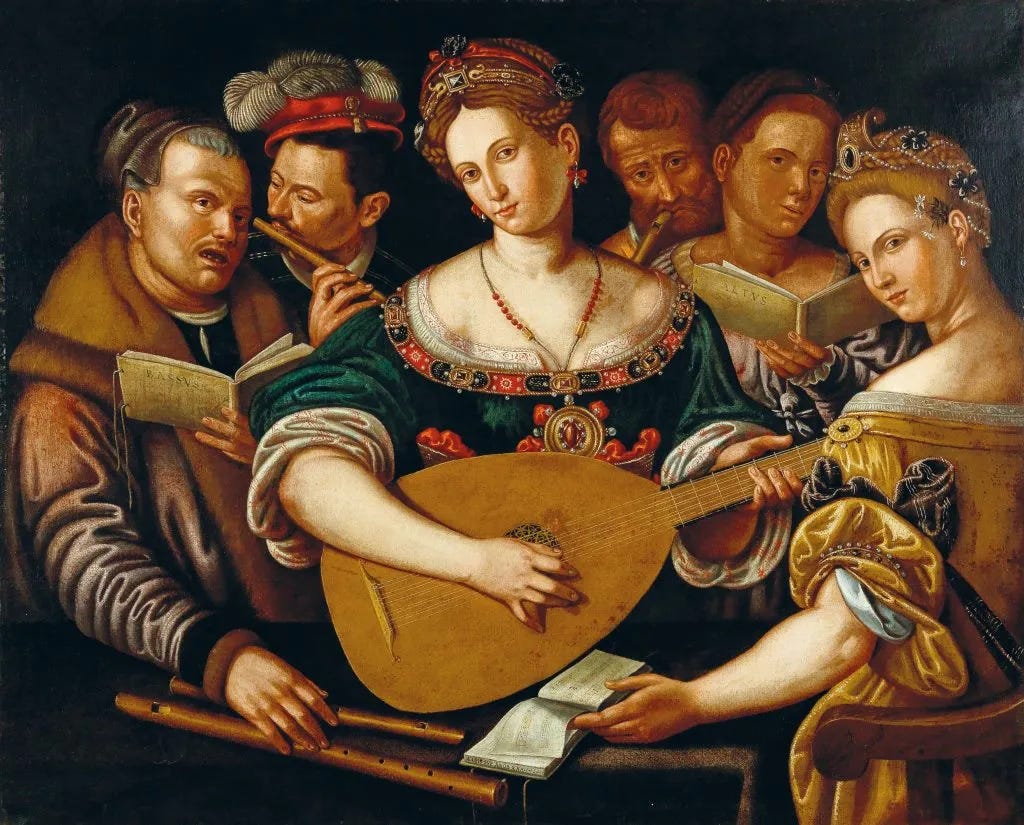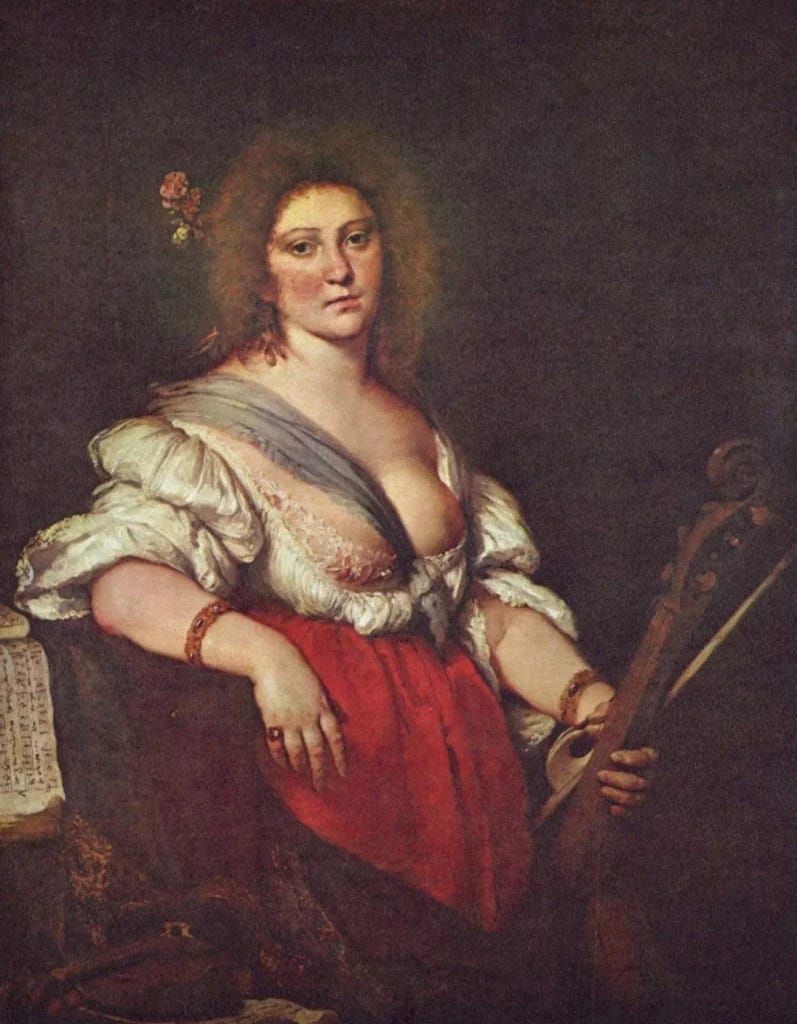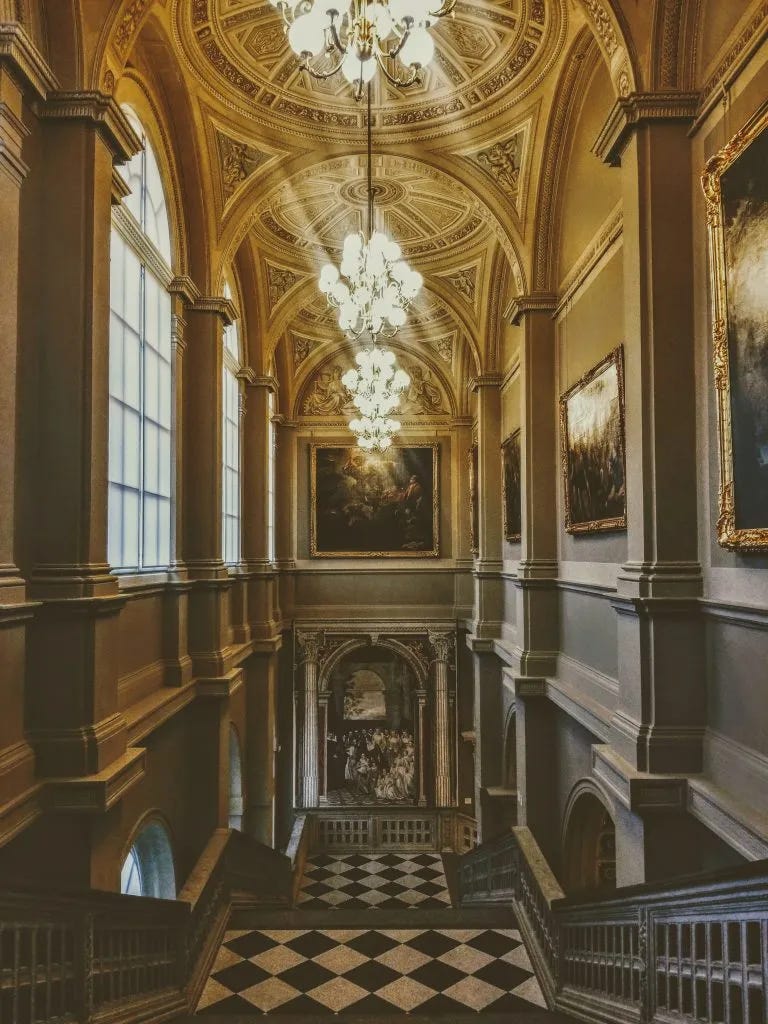The Portrait of Barbara Strozzi: Tales of Gossip, Rumor, and Innuendo
Reflections on Barbara Strozzi's È giungerà pur mai (1664)
What occurs when a person’s legacy is heavily informed by a portrait? What if a portrait became the singular image to validate their existence? And what if their existence, or certain details of it, were defined by the fact that their breast was partly exposed?
Barbara Strozzi (1619-1677) was a Venetian singer, composer, and lutenist. Presumed to be the illegitimate child of Giulio Strozzi, a poet and member of the Accademia degli Incogniti, an exclusive society of all-male Venetian intellectuals, Barbara was well-educated and excelled in music, studying composition with composer Francesco Cavalli. Her father supported and publicly promoted her work. In 1637, he founded the Accademia degli Unisoni, a society dedicated to music at the Strozzi home. At the Accademia’s meetings, Barbara would often premiere and perform her newest compositions. From 1644 to 1664, she published eight volumes of music. Notably, Barbara published under her own name, which was highly unusual for a woman of her day.
Most of her compositions, such as È giungerà pur mai (1664), were written for treble voice(s) with continuo and occasional obbligato instruments. Barbara was particularly adept at illustrating the emotional drama of her texts, often highlighting specific words with highly dissonant harmonies and unexpected harmonic progressions.
In È giungerà pur mai, Barbara sets text by Giuseppe Artale, who employs a playful rhetorical device. Is the object of the narrator’s affections… Barbara herself? The miserable narrator of Artale’s poem, rejected in love, claims “Troppo Barbara e crudele,” translated as “Too barbarous and cruel” or “Too cruel is Barbara.” Later, the narrator states, “Anco Barbara t’adoro,” translated as “Even barbarous, I adore you,” or “Yet I adore you, Barbara.” These double meanings are further highlighted by the fact that Strozzi may have performed this piece herself, ensuring that this "'Barbarous-Barbara" allusion was not lost on her audience.
Why, though, does Bernando Strozzi’s portrait, Female Musician with Viola da Gamba (1635-1639), which is believed to be a likeness of Barbara Strozzi, matter? It has inevitably shaped the public perception of her life, often overshadowing aspects of her work. Due to Barbara’s public role as a scholar, composer, and musician, satires were circulated by male contemporaries, labelling Barbara as a courtesan, with criticism such as, “It is a fine thing to distribute the flowers after having already surrendered the fruit.”1 Strozzi’s status as an unmarried woman with four children, potentially from a relationship with Giovanni Paolo Vidman, further strengthened the “Strozzi as courtesan” rumors. These rumors began circulating in 1630's Venice and remain pervasive to this day. Although there is no explicit historical evidence to prove these claims, musicologists have attempted to validate (or invalidate) their accuracy.
Female Musician with Viola da Gamba (1635-1639) depicts a young woman with flowers in her hair, a musical score resting next to her elbow, and a viola da gamba and bow in hand. She may be on the verge of strumming her instrument and stares unabashedly at the viewer. One of her breasts is removed from the bodice of her dress. While depictions of exposed breasts have symbolized "woman as courtesan" in Western European art history, representations of women’s breasts have also contained a myriad of cultural meanings, including fertility and abundance. It seems that Barbara's semi-nudity, paired with malicious gossip of her day, provided sufficient “proof” of her status as courtesan to carry into musicological explorations of her life and work throughout the centuries. A newer, less sexualized interpretation by Candace Magner, however, suggests that Barbara embodies Flora, the Roman goddess of nature, flowers, spring, and fertility.2
In 2019, as I visited the Gemäldegalerie in Dresden, I came upon this portrait, unaware that it was part of the Dresden collection. I instantly recognized Barbara Strozzi, not due to the viola da gamba and her musical score, but due to her exposed breast. I realized that this narrative about her sexuality, based on rumor, gossip and innuendo, had entered my consciousness. The weight of being pursued through time by a semi-exposed breast, of having one's personal narrative defined by a single detail is a larger reflection of the historic judgments placed on women and their bodies as creative agents.
Barbara Strozzi's È giungerà pur mai was performed as part of Portraits: The Self Illuminated. For more information on this program, check out my projects.
Watch
È giungerà pur mai, op. 8
Cameron Welke, theorbo
December 2019, Peabody Institute
Click here to follow my other upcoming projects and subscribe to my YouTube channel to watch/listen to performances of the song repertoire of women composers.
Candace A Magner, “A Short History of Barbara Strozzi.” In È giungerà pur mai. Cor Donato Editions, 2015.
Magner, “A Short History.”







